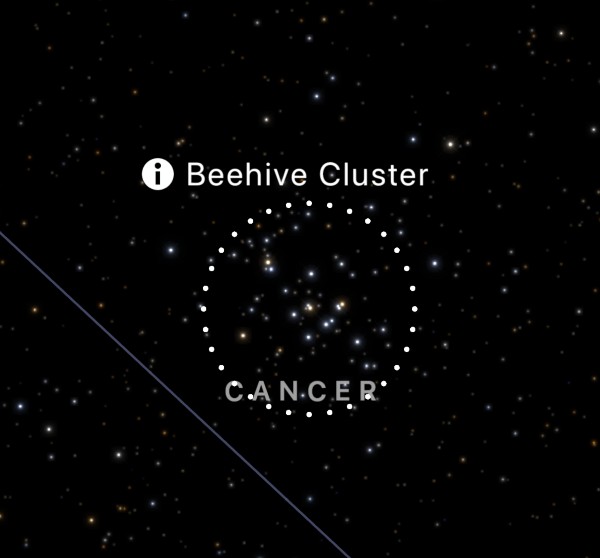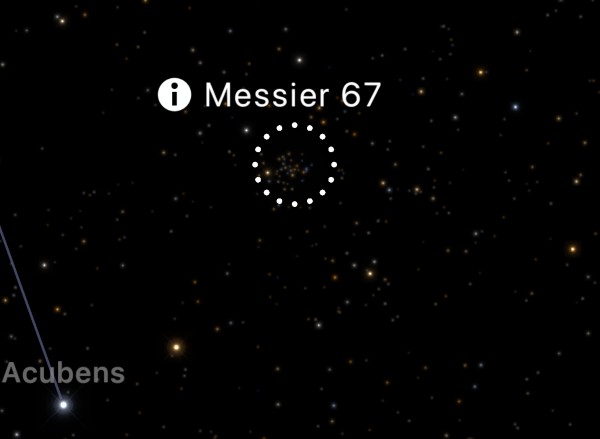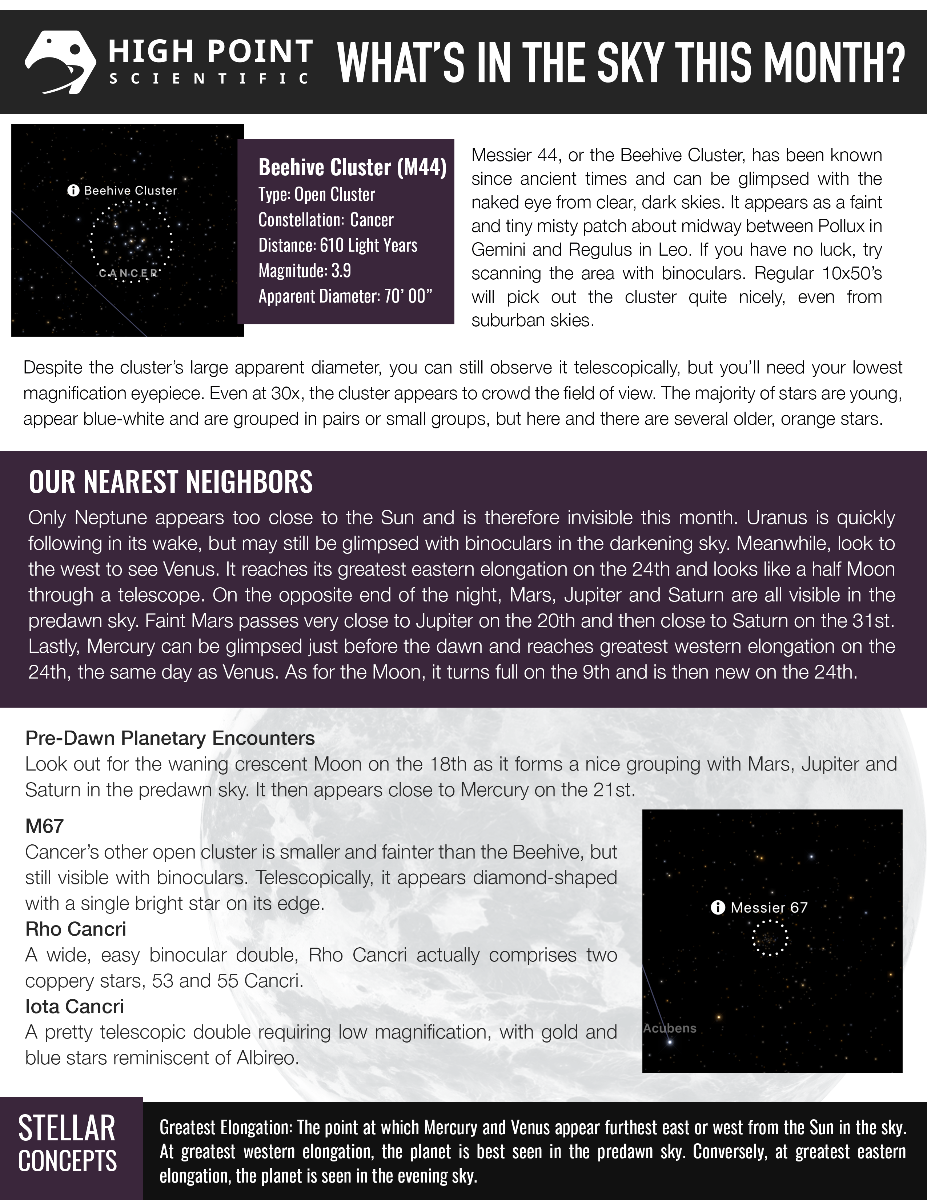What’s In the Sky This Month? March 2020
Our Nearest Neighbors
Only Neptune appears too close to the Sun and is therefore invisible this month. Uranus is quickly following in its wake, but may still be glimpsed with binoculars in the darkening sky. Meanwhile, look to the west to see Venus. It reaches its greatest eastern elongation on the 24th and looks like a half Moon through a telescope. On the opposite end of the night, Mars, Jupiter and Saturn are all visible in the predawn sky. Faint Mars passes very close to Jupiter on the 20th and then close to Saturn on the 31st. Lastly, Mercury can be glimpsed just before the dawn and reaches greatest western elongation on the 24th, the same day as Venus. As for the Moon, it turns full on the 9th and is then new on the 24th.

M44, the Beehive Cluster:
| Type: | Open Cluster |
| Constellation: | Cancer |
| Distance: | 610 Light Years |
| Magnitude: | 3.9 |
| Apparent Diameter | 70’ 00” |
Messier 44, or the Beehive Cluster, has been known since ancient times and can be glimpsed with the naked eye from clear, dark skies. It appears as a faint and tiny misty patch about midway between Pollux in Gemini and Regulus in Leo. If you have no luck, try scanning the area with binoculars. Regular 10x50’s will pick out the cluster quite nicely, even from suburban skies.
Despite the cluster’s large apparent diameter, you can still observe it telescopically, but you’ll need your lowest magnification eyepiece. Even at 30x, the cluster appears to crowd the field of view. The majority of stars are young, appear blue-white and are grouped in pairs or small groups, but here and there are several older, orange stars.
Pre-Dawn Planetary Encounters
Look out for the waning crescent Moon on the 18th as it forms a nice grouping with Mars, Jupiter and Saturn in the predawn sky. It then appears close to Mercury on the 21st.

M67
Cancer’s other open cluster is smaller and fainter than the Beehive, but still visible with binoculars. Telescopically, it appears diamond-shaped with a single bright star on its edge.
Rho Cancri
A wide, easy binocular double, Rho Cancri actually comprises two coppery stars, 53 and 55 Cancri.
Iota Cancri
A pretty telescopic double requiring low magnification, with gold and blue stars reminiscent of Albireo.
Stellar Concepts
Greatest Elongation: The point at which Mercury and Venus appear furthest east or west from the Sun in the sky. At greatest western elongation, the planet is best seen in the predawn sky. Conversely, at greatest eastern elongation, the planet is seen in the evening sky.
Free Printable Celestial Calendar

Star charts created with SkyGuide for iOS.
